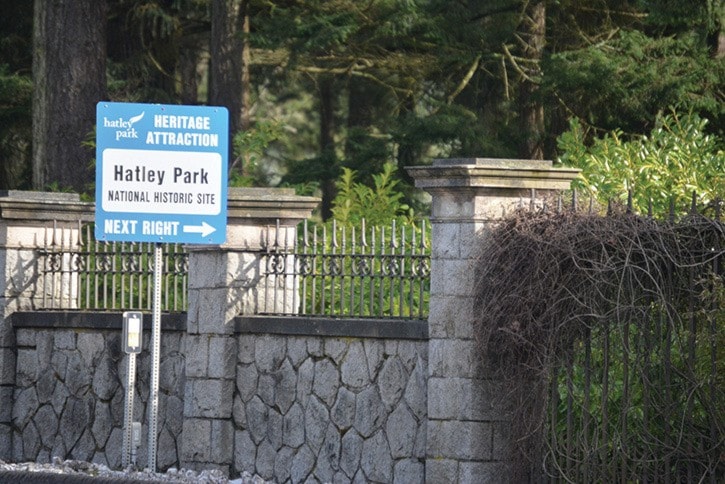The vast 700-acre property surrounding Royal Roads University might be designated a National Historic Site, but that doesn't necessarily protect it from future development should the Department of National Defence go ahead with its disposal.
Community members who wish to see the property preserved may be heartened to hear that the Songhees First Nation, who have expressed interest in purchasing the land in partnership with Esquimalt Nation, aren't eager to tear down history.
"Despite some of the excited response in the papers and other places, Songhees' interest isn't to dramatically damage or destroy what's over there at Royal Roads," said Robert Janes, a lawyer representing the nation.
The Hatley Park property was designated a historic site in 1995 and according to Royal Roads' 2006 campus plan, it became the largest national historic site in Canada. That's because the designation doesn't just apply to Hatley Castle and some of the other buildings, but the broader site, including the forest, trails and gardens.
The campus plan also states that, "Hatley Park is also the only national historic site that recognizes the forest as a key component of its commemoration. This special trait is to be enhanced and respected through the development and growth of the university and efforts must be made to repair and restore the historic and natural landscapes."
That protection appears to be more of a Royal Roads mandate than any significant level of preservation, as the site isn't one of the 140 sites that Parks Canada operates.
"Designation under the Historic Sites and Monuments Act … is for commemorative purposes and does not provide for the protection of national historic sites that are not administered by Parks Canada," wrote Parks Canada media relations officer Audrey Champagne in an e-mail. “While a national historic site designation helps to focus public attention on a particular site, it does not affect ownership of the site or provide protection against destruction.”
The RRU campus plan also outlines the significance of the land as part of First Nations territory.
"Historical evidence of aboriginal use is provided by the presence of shell middens in Hatley Park, as well as culturally modified trees from which strips of bark were taken and used for a variety of cultural purposes.”
Discussions between First Nations and DND on the future of the land are ongoing and while Janes said it's "way too early” in the process for First Nations groups to know what development might look like, he expressed their desire for it to be sensible.
"The largest part of the process right now is straight information gathering. Identifying and understanding issues like … the parameters of the heritage designation, because it doesn't cover all of the land," he said.
Janes added that they are figuring out terrain and environmental issues as well as any problems that may arise due to climate change.
Meanwhile, Colwood residents have established the Royal Roads Group, a party that aims to give residents a collective voice during this process.
"This land was First Nations land, it is First Nations land and it will be First Nations land … we don't know what form that will take (in future),” said Judith Cullington, one of the group's leaders.
"From the community's point of view, there's a big black box in which a lot is happening, but we're not privy to that information. We know that people love this area … (The group) is a way of being able to say 'this is what's important to us. Please consider this when you're making decisions about what happens on this land'," she added.
Interested residents can contact the group by e-mailing royalroadsgroup@gmail.com.
joel.tansey@goldstreamgazette.com
